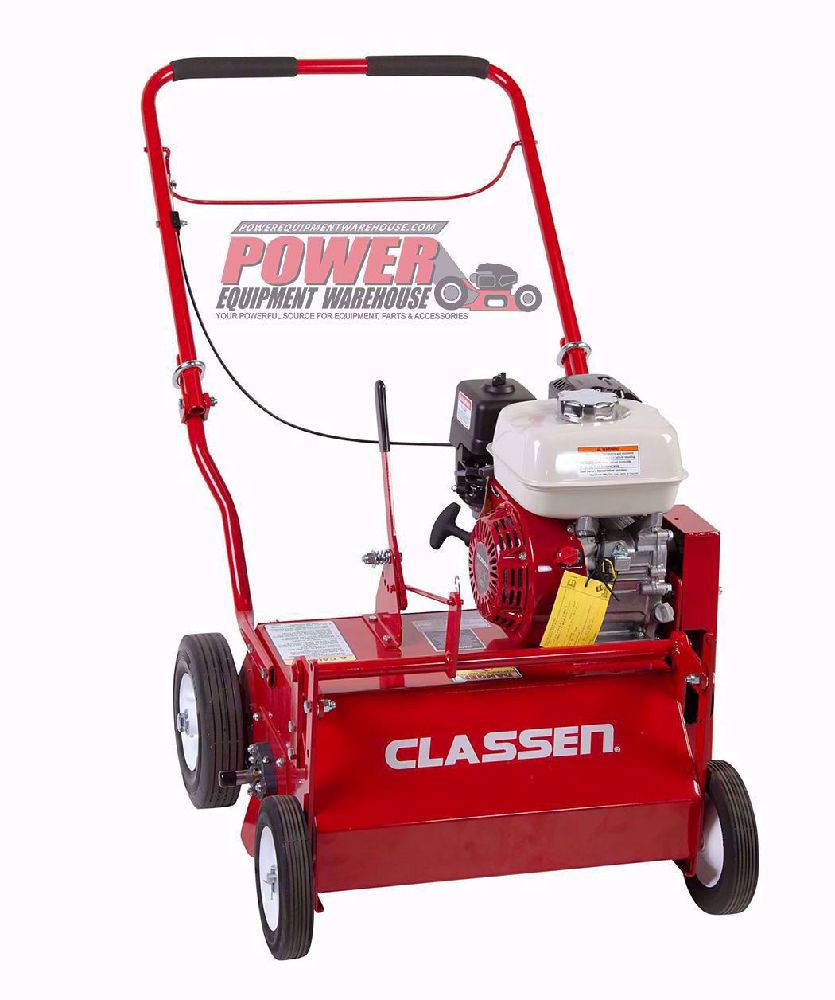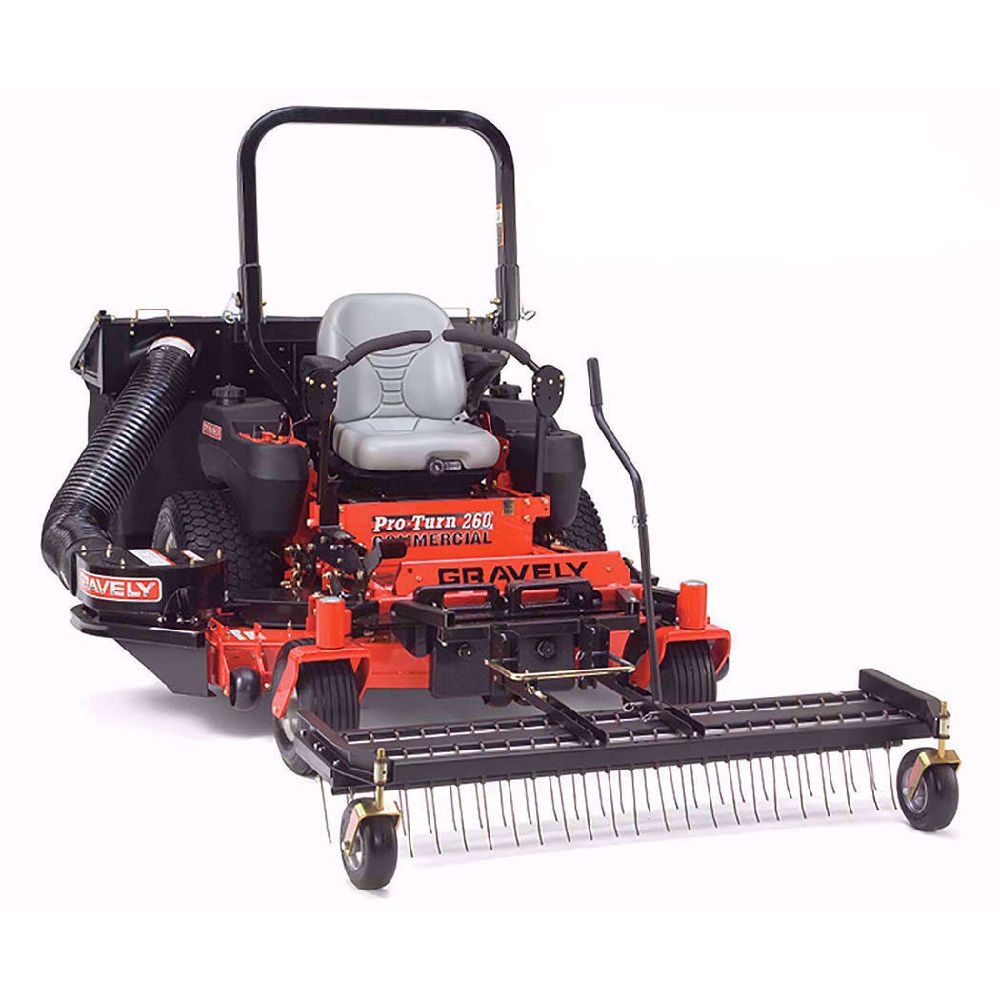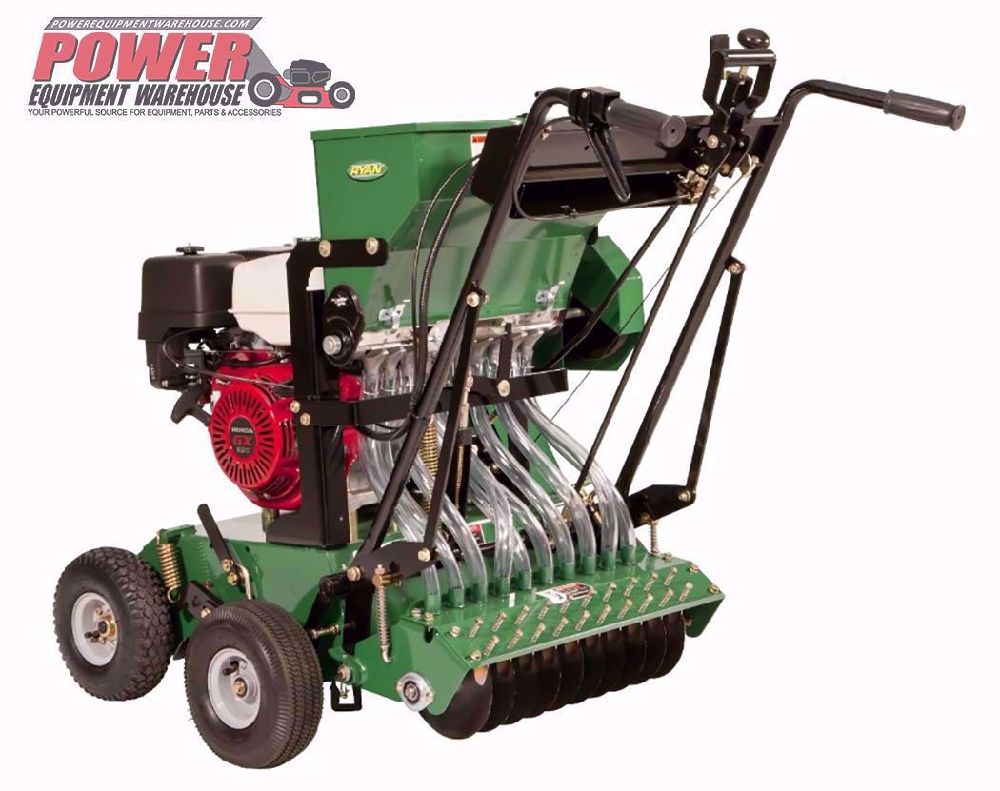Dethatchers & Overseeders
What the heck is thatch? Well, if you want to learn more about a dethatcher, you must have thatch!
Thatch is the pesky build-up of dead grass, and organic plant material that settles between the active layer of growing turfgrass and the surface of the soil. It forms as part of the natural growth and decay process of grass.
In a lawn ecosystem, microorganisms help break down thatch and recycle it back into the soil as nutrients. A small layer of thatch is healthy for your lawn, but when this organic matter grows faster than it decomposes, thatch will accumulate. To tell if you have too much thatch in your yard, cut a section of grass, and if the thatch layer squishes down and rebounds like a sponge, you have too much thatch.
- A dethatcher is a lawn tool that effectively removes thatch from your lawn. A dethatcher can simply be a hand-held rake, or can have tines or fingers that comb the grass, pulling thatch up to the surface.
- When operating a dethatcher, it may be hard to see the thatch since it is very fine and can disintegrate when dethatching begins. If you don’t want to use a hand-held rake to dethatch your lawn, you could use a dethatcher that is towed behind a tractor, or you can use a power dethatcher.
- It is best to dethatch when the grass is actively growing. In northern areas, it’s best in the early spring or late fall, while In southern areas, it is best to dethatch in late spring and throughout the summer.
Great deals on dethatchers & overseeders!
Shop online today at Do-Cut's Power Equipment Warehouse
Dethatching 101
- Mow your lawn to half its normal height.
- Use the dethatcher, and then rake away excess thatch.
- Use an overseeder to reseed bare patches in the lawn.
- Fertilize.
- Do not use a dethatcher on young grass or grass that is just coming out of winter dormancy. Doing so can cause more injury to the young grass and even kill it.
- Using too much fertilizer can lead to a buildup of thatch. It’s a good practice to recycle or mulch the grass clippings back into your lawn, as this adds nutrition to the soil. Don’t cut your grass too low, water and reseed as needed.
Three things to remember when recycling or mulching grass clippings:
- Never cut more than one third of the growth.
- Keep underneath of your mower deck very clean.
- Keep your mower blades very sharp.
Overseeders
After several years, the growth rate of mature lawns begins to slow down. An average blade of grass lives 45 to 60 days. Overseeding refers to seeding your lawn without turning the topsoil. This will keep your grass young, growing and outpacing dying mature blades. This gives your lawn thicker growth, better color and greater resistance to disease and drought.
- Using an overseeder allows you to deliver seed directly onto the turf just after slitting or dethatching.
- It’s best to prep your yard before overseeding. The best way to prepare your yard is as follows:
- Measure the net square footage of the area that needs to be seeded, so that you purchase the correct amount of seed.
- Cut your grass to about half the normal height of a cut.
- Dethatch or aerate your yard, and be sure the top one inch of soil is fairly moist – not super dry.
- Have a sprinkler on hand to use after overseeding.
- You may want to seek the advice of your local environmental extension office for recommendations on what type of grass seed to use. Using the right grass seed will yield better results.
- You not only have to use the right grass seed, but you also need to apply it at the correct rate from the overseeder hopper.
- The most effective type of overseeder is one that uses disc or flail blades to slice the turf. One with spring tines is also ok to use, as this type of overseeder will remove thatch, but will not slice the turf prior to delivering the seed. Overseeders that slit, or cut grooves into the surface of your lawn are most effective, as the seed will likely drop into the slit to germinate.
- It is best to use an overseeder in the fall because summer weeds are less prevalent, soil temperatures are still warm, and air temperatures are cool which is better for grass growth.
- If you use an overseeder in the fall, you may not see results until after the snow melts, but you will be surprised at how thick and healthy the turf will be. The roots will have a few months to become established in the fall and in the spring, the roots will grow deeper and stronger which will choke out those pesky spring and summer weeds.
- You can use an overseeder in the spring, but best results are in the fall season. When using an overseeder, it should pull you along. If the overseeder is not pulling you forward, the blades are set too high and not scarifying the turf.
- When seeding has been completed, you will need to water the new seed. Watch the weather forecast. One hour of watering per section applies 1/2 to 1 inch of water to the soil. Keep the soil moist, not submerged. The seeds can take 10 to 14 days to germinate, you can then reduce watering time to 30 minutes per section until the lawn is established.
- Fertilizing can be done right after you’ve seeded the lawn. The turf’s soil requires air, water, nitrogen, phosphorus and potassium. You can seek advice from your extension office as to best fertilizer for your soil.
- Remember to always wear the correct safety apparel when using an overseeder.
Do-Cut Sales & Service in Canfield and Warren, Ohio has everything you need to manage your yard. Our team of professionals will gladly help you select the right overseeder for your yard.




